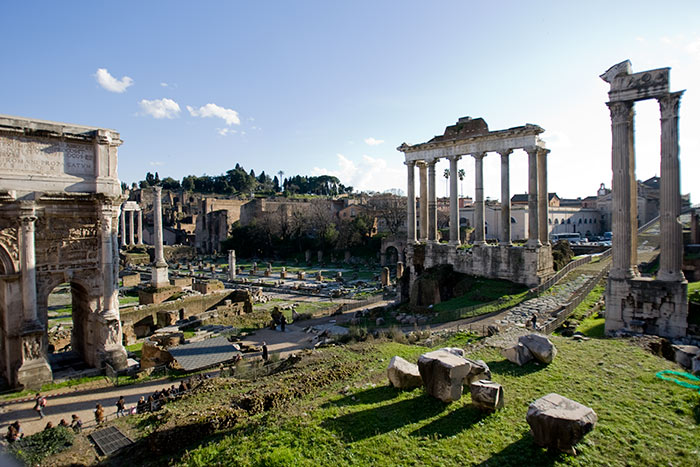Sponsored Listings:
Rome – the Eternal City – has some of the most iconic landmarks in the world, exceptional food, art masterpieces and ancient remains.
It’s a place of pilgrimage for Catholics, as the Pope lives there in this own enclave, and easily one of the most beautiful cities in the world. So here’s out guide to making the most out of your visit to the capital of Italy.
Admire the greats of Antiquity
The Roman Forum. Image by Martina Cristofani via Roma Turismo
You can buy a ticket that gives you access to all three of the main ancient landmarks (see below) – and they are worth visiting together. Book in advance to avoid the queues at the Colosseum – and the Roma Pass also gives you priority access.
1. Start with the Roman Forum
The Forum was rediscovered in 1803. After a century of excavation it was reopened to the public and you can wander right through this open-air museum which dates back to 6th Century BC.
Wandering through the remains of what was once the heart of Roman public life, its hard to believe it was used as a quarry during the Renaissance.
There are well-preserved temples and monuments, free audio guides, and plenty of information explaining what everything once was.
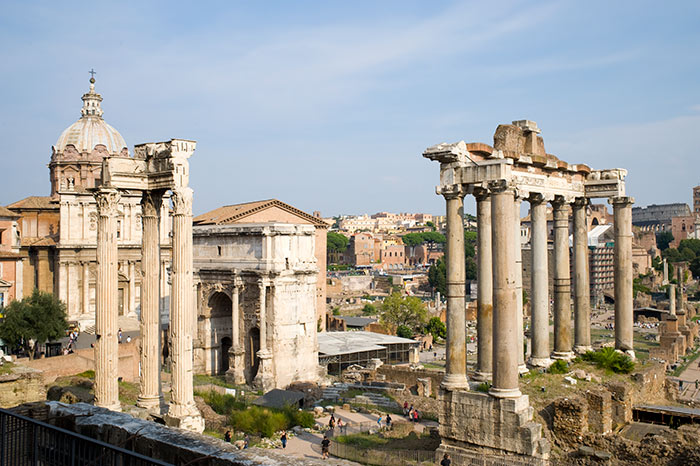
Roman Forum. Image by Vanda Biffani via Turismo Roma
2. Climb the Palatine Hill
This is place Rome was born. Romulus is said to have killed his brother Remus on Palatine Hill, and excavations have also found evidence of Iron Age settlements.
Now a beautiful park, this is where the Roman aristocrats and emperors had their palaces, led by Emperor Augustus who thought it was a good spot overlooking the Tiber.
3. Imagine gladiatorial combat at the Colosseum
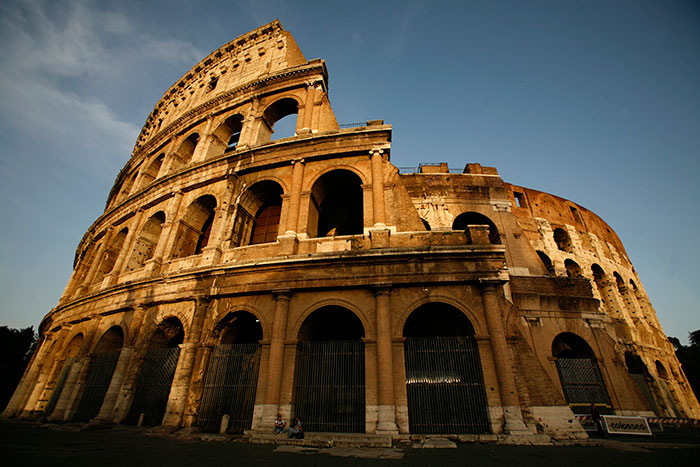
Colosseo. Image by Martina Cristofani via Roma Turismo
The 2,000-year-old Flaviant Amphitheatre is the biggest ever built.
This is where the Romans would watch the gladiators and other spectator events. The best news? Restoration was completed in 2016, so you can now see the building in all its glory.
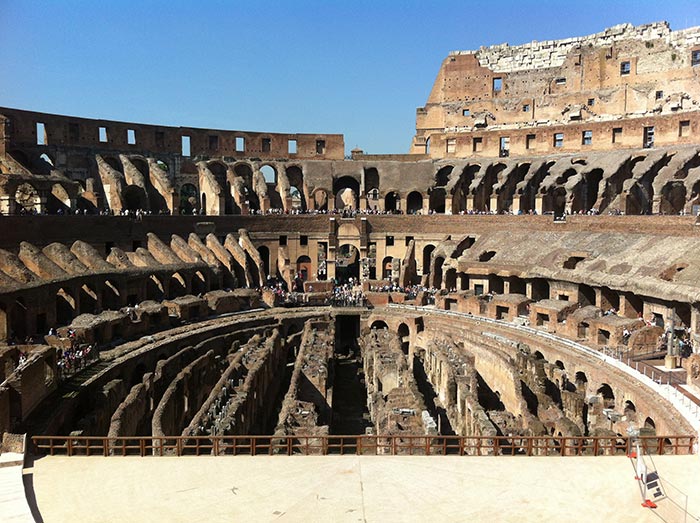
The Colosseum. Image by Kirsten Beacock
4. Pop into the Pantheon
Originally built by Emporer Hadrian in 125AD, it was later converted into a Christian church by Pope Boniface I and is very well preserved.
The star of the show here is the “oculus”, a 9m-round aperture (a hole where light travels through) in the ceiling.
Visit when the sun is shining to see the whole interior illuminated with shafts of light. Equally it’s fun to go when it rains, as you can see the falling water “disappear” into 22 tiny holes.
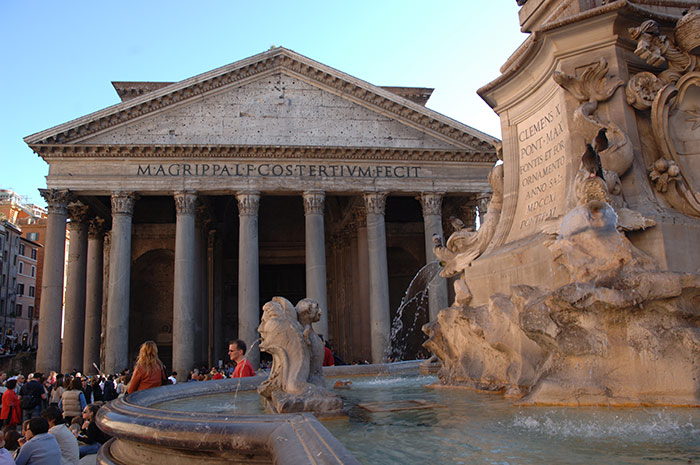
Pantheon. Image by Andrea Cenni via Roma Turismo
Visit The Vatican
The only independent country in the world to be found within a city, you can easily spend half a day in Vatican City.
5. Start with the museums
The queues for the Vatican museums can be quite large – so it’s worth buying your tickets online in advance.
You can wander through the sprawling city, from building to building and gallery to gallery, and see how it has evolved throughout each Pontiffs’ time in office.
There are paintings, tapestries, plates and sculptures among other fine works – as well as some gardens.
DID YOU KNOW? The population of Vatican City is around 800. Of these, around 450 people have citizenship while the others have permission to live there.
6. See the Sistine Chapel
You’re not allowed to take photographs inside so this is one wonder for your eyes only.
And in any case images of the ceiling masterpiece, the Last Judgment by Michelangelo, don’t do the 16th Century artwork justice.

San Pietro, the Ponte San Angelo dal Tevere. Image by Andrea Cenni via Roma Turismo
7. Join in the Papal Audience
While the Pope does live there, he is often travelling, so if you want to try and see him you should check his calendar on the website.
Papal Audiences are free and held on Wednesdays and usually start at 10am in St Peter’s Square (get there for 8am when the gates open if you want to get a good seat).
8. Go inside St Peter’s Basilica
Michelangelo’s dome dominates the skyline here, and has inspired the designs of St Paul’s Cathedral in London and the Capitol Building in Washington.
It took more than 150 years to compete the Basilica. Inside, there are outstanding mosaics and artwork, including Bernini’s baldachin and Michelangelo’s Pietà.
The interior can hold 20,000 people, so even if there’s a queue to get in, once you’re inside it isn’t too crowded.
9. See paintings in the smaller churches
The majority of churches are free to enter, and its well worth wandering into them, as many of them contain masterpieces.
If you’re a fan of Caravaggio, San Luigi Francesi, Sant Agostino and Santa Maria del Popolo churches all contain one of his canvasses.
The Gothic Basilica Santa Maria spora Minerva also has a Michelangelo sculpture.
And outside in the Piazza della Minerva you can see the famous statue of the elephant holding up an Egyptian obelisk.

Castel Sant’Angelo. Image by Fausto Quintavalle via Roma Turismo
10. Castel Sant’Angelo
Emporer Hadrian built the fortress originally as a mausoleum, before it was converted into a military outpost.
It’s now home to the Museo Nazionale di Castel S. Angelo.
A certain times in the summer the Passetto di Borgo is open to the public. This elevated route linking the castle to the Vatican was created as an escape route for the Pope.
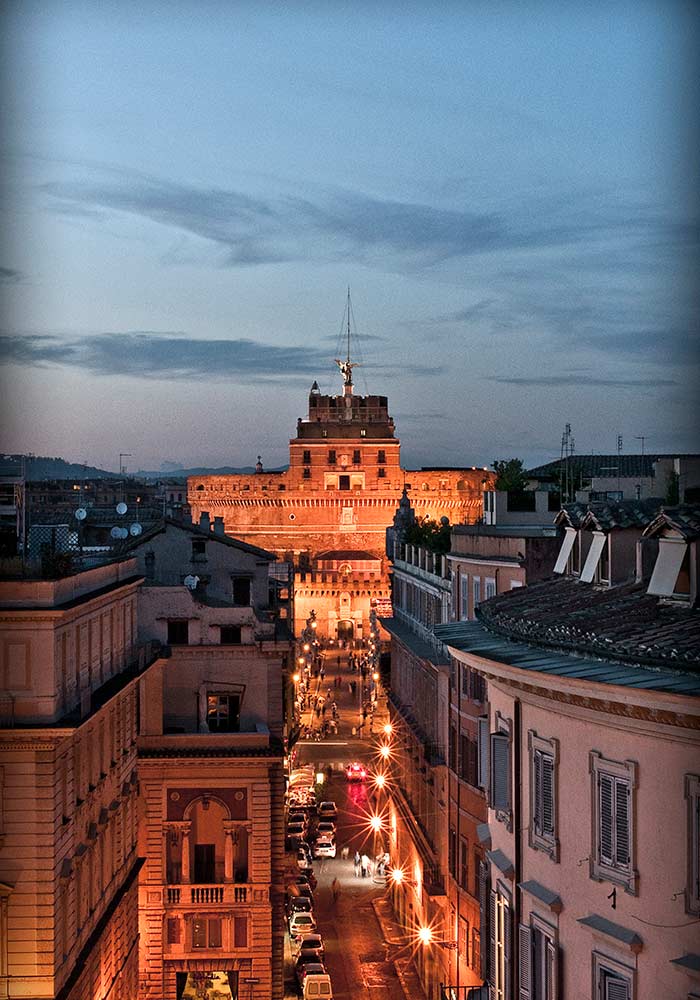
Castel A Angelo. Image by Emanuele Bastoni via Roma Turismo
11. Visit the Villa Borghese
There’s around 200 acres of gardens in this hillside park, and you get great views of Rome.
Hire bikes or buggies and explore the fountains, follies and buildings, including a replica of Shakespeare’s The Globe in the middle of the park.
The museum, which is open six days a week, has some incredible Bernini sculptures. Book tickets in advance to go inside the museum and gallery – they are snapped up quickly – buy them here.
12. Find a fresco
The Villa Farnesina in the lovely Trastevere quarter is a riverside villa once owned by a banker, then by a a cardinal. On the ground and top floors, there are fantastic frescos by Raphael (Raffaello).
You pay a little extra for a guided tour of the house and gardens, and if you’ve visited The Vatican in the same week, show your ticket for a reduced entry fee.
Eating and Drinking in Rome
13. Get started with a espresso
Espresso is not for sitting around and sipping, so drink it like a Roman: standing up at a bar, and then be on your way.
The Telegraph have put together a handy etiquette guide for ordering a coffee in Rome.
14. Try a local delicacy
Rome has its own local specialities that might be worth trying, such as Roman artichokes.
Now protected, the Ancient Romans considered artichokes a delicacy (and used it as an aphrodisiac). Grown to the north west of the city, the best time to try them is between February and May.
Other local specialities are Cacio e Pepe – which basically translates as cheese and pepper – a basic but attractive pasta dish, and Roman-style tripe – Trippa alla Roman – which is cooked in a tomato-based sauce.
Lots of companies offer food tours in Rome, especially around the Testaccio neighbourhood.
15. Cool down with a gelato
There are hundreds of gelato places in Rome.
Gelato is usually lower in fat than ice cream but has a higher sugar content.
16. Have a lazy lunch

Traditional food at (c) Maccheroni
Head away from the busy Piazza Navona, down the Via Arco della Pace. The street in front of the church is very romantic, with lots of bars and restaurants.
Try authentic rustic Roman food at Maccheroni – book ahead if you want to sit outside. Or to eat somewhere with a intriguing history, Hostaria Costanza is a good place to go – you’ll find it in the walls of Pompey’s theatre.
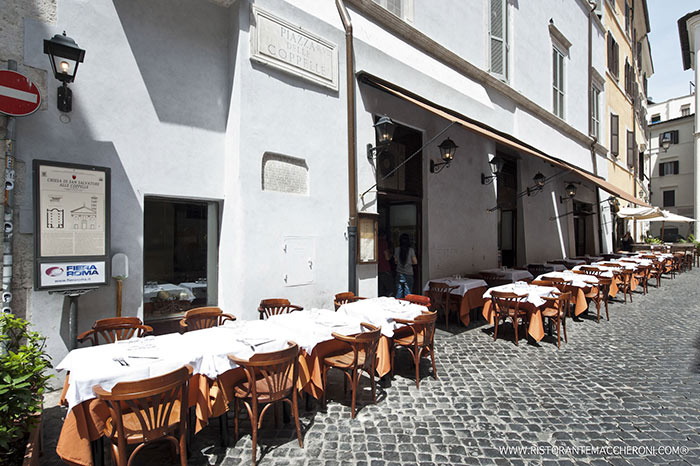
(c) Maccheroni
17. Go for a swanky cocktail with view
The Hotel Forum’s rooftop American Bar and Rooftop Restaurant both have superb views across Rome.
Guests at the hotel have included film star Gregory Peck, First Lady Jacqueline Kennedy and the Dalai Lama.
There are also wonderful views across Rome’s rooftops from the Raphael Hotel’s sun-trap Terrace Restaurant and bar.
There are also plenty of places to get a free view, like Gianicolo Hill.

Gianicolo Hill – Emanuele Bastoni. Image via Roma Turismo
18. Browse the oldest market in Rome
Once a place for public executions, Campo dei Fiori is now a market by day, with side streets full of independent businesses and small shops.
Pop back in the evening, when the square becomes a party place – it’s also the only Roman piazza without a church on it.
19. Peak through the keyhole at St Maria del Priorato
Look carefully and you can see the Dome of St Peter from this doorway on Aventine Hill.
You’ll have to make an appointment if you want to head through into the gardens of the Santa Maria del Priorato however.

St Pietro through the keyhole at St Maria del Priorato. Image by Andrea Cenni via Roma Turismo
20. Walk along the original Roman Road
The ancient Appian Way is possibly one of the most historically significant routes in the world.
Built in 321BC to enable the march of the Roman Army south, you walk along what is essentially an open-air museum.
21. Stumble upon some unusual architecture
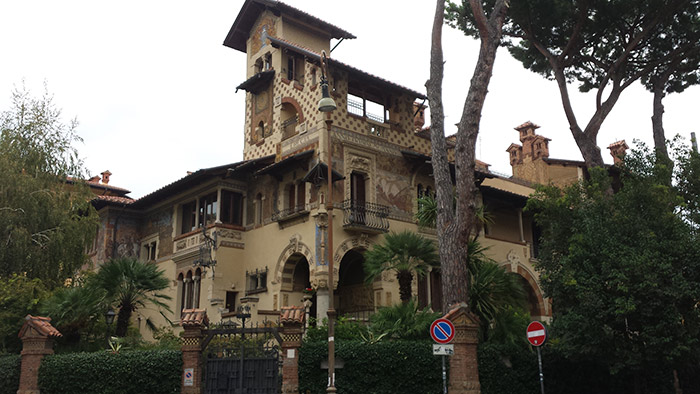
Quartiere Coppedé in Rome. Image by Chris Beacock
Visit the Quartiere Coppedé neighbourhood and you’ll find examples of nearly every architectural style, including some Baroque, Art Deco and Italian Art Nouveau.
Keep an eye out for the fantasy-style ornamental fountains, too.
22. Stroll down one of the prettiest streets in the city
The Via dei Coronari is a beautiful old street with antiquity shops along it.
Dating back to the 15th and 16th centuries, the current road follows the ancient Roman Road that connected the area to the Tiber.
23. Live La Dolce Vita on your Roman Holiday
Rome has been the location for many famous films over the last century.
In Roman Holiday (1953), Audrey Hepburn and Gregory Peck visit La Bocca della Verità, the Mouth of Truth in one of the most iconic scenes. The couple also zip around on a Vespa – and there are plenty of hire firms if you fancy getting your own. Join the queue in the portico of the Basilica of Santa Maria in Cosmedin and for a small donation put your hand in the gap, which legend has it, will snap off your hand if you tell a lie.
DID YOU KNOW? The word “Paparazzi” comes from the film La Dolce Vita. The news photographer character and friend of the anti-hero, was called Paparazzo.
Much of Federico Fellini’s masterpiece La Dolce Vita (1960) is set on the streets surrounding Via Vittorio Veneto, In one famous scene, Anita Ekberg frolicks in the Trevi Fountain with Marcello Mastroianni – but don’t try it now, the local police don’t look kindly on it. But you can also throw some loose change into it for luck (and the chance to return to the city) – as shown in Three Coins in the Fountain (1954).
The Talented Mr Ripley (1999) shows Matt Damon, Cate Blanchett and Gwyneth Paltrow running around Rome, with the Spanish Steps and the Piazza Navona key to the plot.
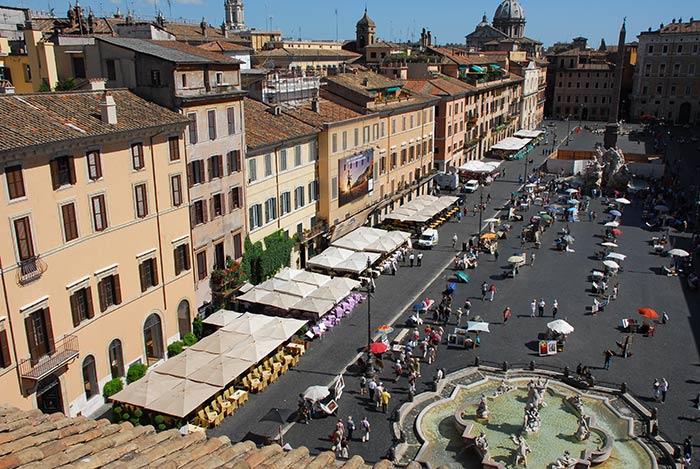
Piazza Navona. Image by Fausto Quintavalle via Roma Turismo
24. See a Serie A game
Rome’s two major football teams, Associazione Sportiva Roma and Lazio, both play their home games at the Stadio Olimpico (Olympic Stadium) in Serie A (Italy’s premier league).
How to tell the difference? Lazio‘s sky blue colours were inspired by Greek Olympians and their emblem, the Eagle, was picked as it was originally the symbol of the Roman legions. Local rivals AS Roma wear red and yellow with the Capitoline Wolf symbol on their crest.
Unfortunately you can’t do tours of the Olympic Stadium, you can only visit by going to a match.
25. Watch a game of rugby
In February or March, you might be able to watch the Italian Rugby Union team in action in the RBS Six Nations.
They are currently also playing at the Stadio Olimpico.
26. Place a bet on the Cavalli
You won’t see chariot racing anymore in Rome, but you can visit their racecourse (check website for race fixtures).
The Hippodrome Capannelle first held horse races in 1881 and now the facilities are some of the best in Italy.
Take a day trip from Rome
If you’ve got a bit more time, or want to see as much of Italy as possible, consider heading out of the city.
27. Sunbathe on the nearest beach

The beack in Ostia. Image by Vanda Biffani via Turismo Roma
When the weather is baking hot, Roman’s jump on the train and head west to the coast and the Ostia Lido.
It only takes around half an hour by Metro to access the free public beaches, or pay a small fee for a bit more privacy.
28. Visit Ostia Antica, Rome’s ancient sea port
This vast ruin spans around 10,000 acres, so you might want to book a guided tour or pick up a guide book to make the most of it.
Time it right and visit on the first Sunday of the month – entrance is free then.
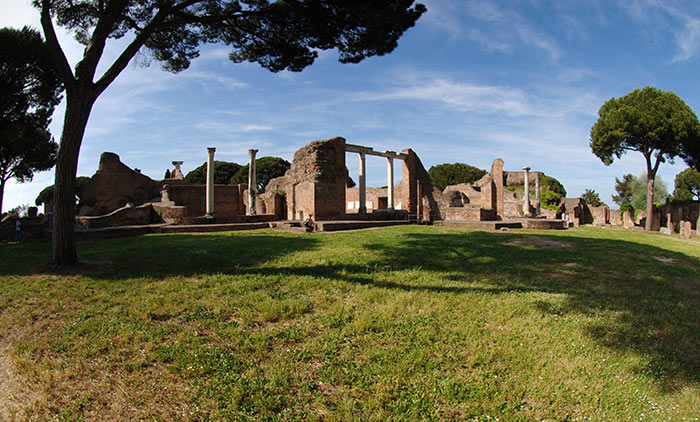
Ostia Antica. Image by Vanda Biffani via Turismo Roma
29. Head east to see where the rich Romans kept their holiday homes
Also half-an-hour from Rome is Tivoli, where the great and the good of ancient Rome built villas to escape the city.
Two very well-preserved villas (now World Heritage Sites) are Villa Adriana, which belonged to Emporer Hadrian (he of the wall) and the Villa d’Este, built during the Renaissance and famous for its formal gardens.
30. Go north west to visit some unusual tombs
At Necropoli di Banditaccia, in Cerveteri, there are thousands of tombs built like a city.
They’re the only remaining examples of Etruscan residential architecture in the world.
Getting around
If you’re planning on exploring mainly on foot and making the odd journey, you can buy tickets for the metro, tram and bus in singles or by the day- here’s how.
A Roma Pass not only gives you access to public transport, but also discounts on entry to museums, queue jumps and money off in participating restaurants.
Rome is of course built on seven hills, so if you don’t fancy some of the steeper bits – you could try a day tour on a Segway.
When to go
The peak tourist season is when Rome is slightly cooler, in spring and autumn.
The temperatures really soar from June to August, with July and August hitting an average of 30C.
August is a popular time for Romans to take their holiday, so some smaller businesses and restaurants shut up shop for a week or two.
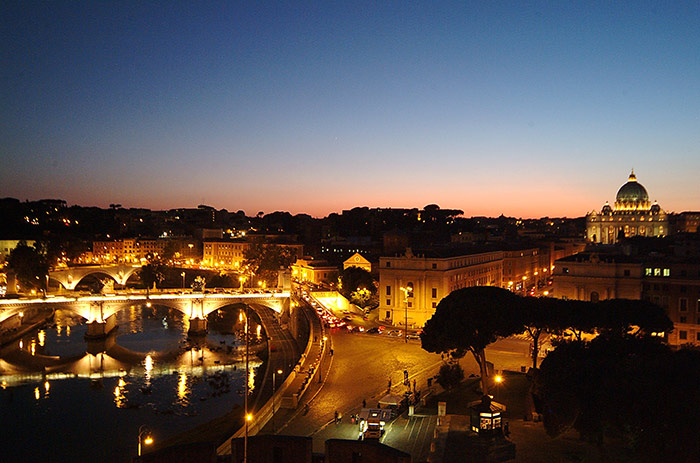
Rome panorama featuring St Peter’s. Image by Fausto Quintavalle via Roma Turismo
Getting there
You can be in Rome in just two and a half hours from London airports and three hours from Edinburgh. Find flights to Rome here.
Staying there
We’ve got plenty of hotels in Rome to choose from, in the heart of the city and in quieter neighbourhoods.
It sometimes can be cheaper to book a city break package where you get your flight and hotel together.

Rome panorama by Chris Beacock
What would you do on a weekend in Rome?
We’d love to know what your favourite places are in the Eternal City. Tell us your top travel tips by leaving a comment below.
Images in the main supplied by Roma Turismo – the official Rome Tourist Board.
Source: lastminute.com

